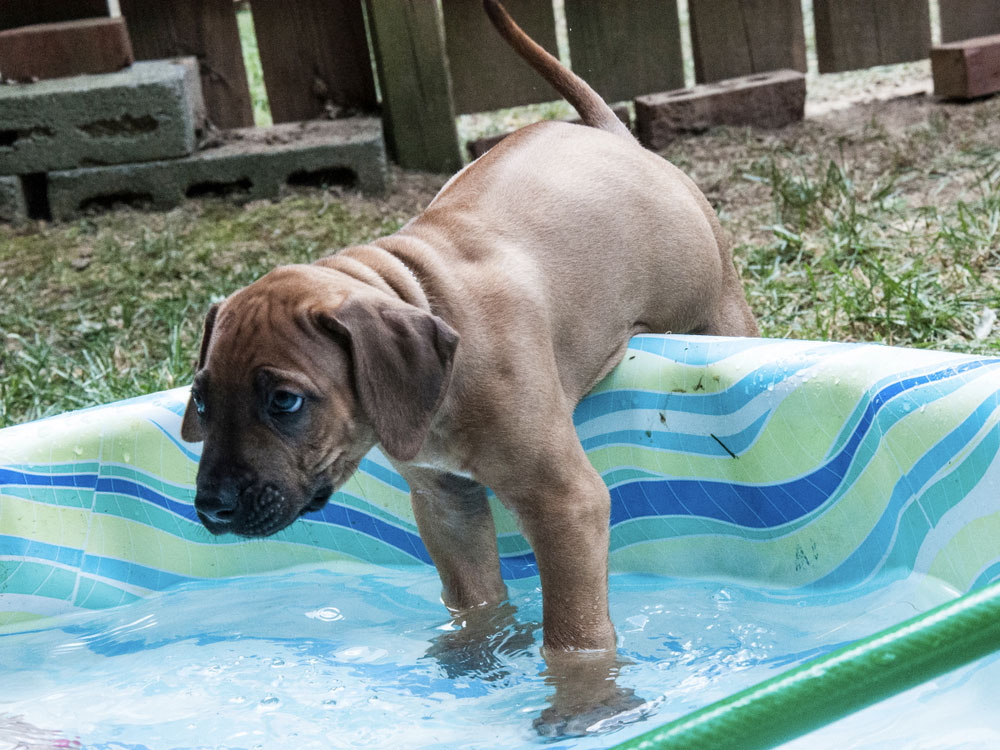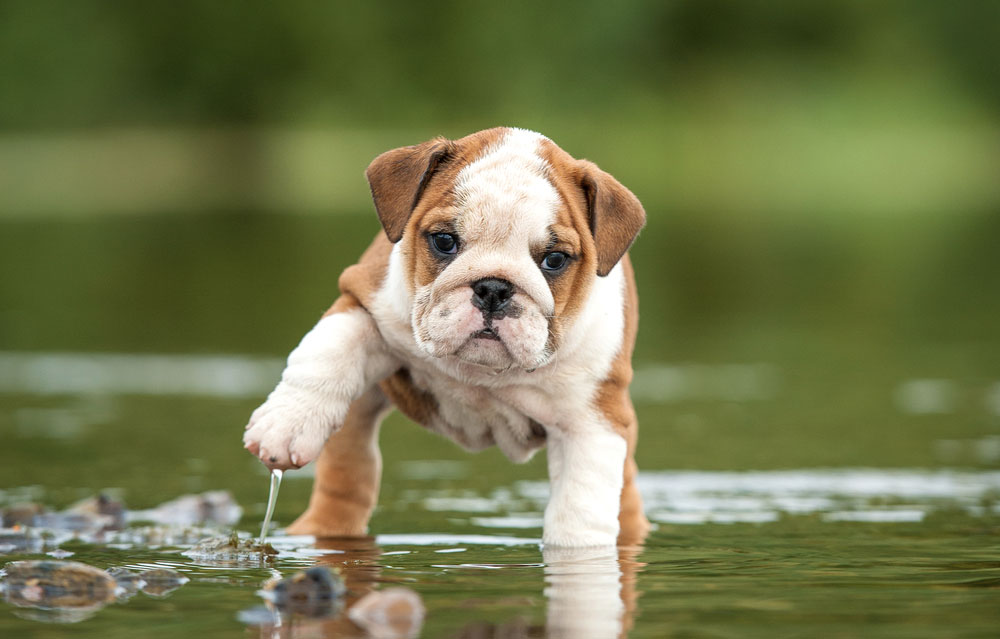
Teaching Your Dog to Swim: How to Get Your Dog in the Water
If you love the water and have a dog, how great would it be if you could combine them? Whether you have an inground or above-ground pool, you spend time each summer at the lake, or you like to boat or fish, having your dog with you will double the fun.
There are things to consider, though. How old is your dog, and is he comfortable around water? The best time to introduce your dog to the water is when he is still a puppy, since puppies are naturally curious and haven’t developed a fear of water yet.
However, it’s also worth noting that they are at a higher risk of accidental drowning. Over 10,000 dogs drown each year in the U.S.
Here are a few basic safety measures you can take to keep your dog safe.
- Never leave your dog unsupervised near the water.
- Invest in a personal safety vest for your dog. Even if your dog knows how to swim, dogs can’t tread water like their human can, and they will become exhausted fairly quick. A vest with handles is ideal, so you can easily lift them back in the boat or out of the side of the pool.
- Purchase a dog exit ramp for your dog. Your dog needs to be able to exit your above-ground pool, and they need to be able to re-enter your boat. There are ramps designed for each, and some will work in both situations.
- If you have a pool, you will need to take safety measures to protect your pet. A good fence with a lockable gate is your first line of defense. Consider a floating alarm that sits on the water and sounds when a person or pet enters the pool, agitating the water.
- Learn dog CPR. If your dog is the victim of near drowning, the worst thing of all would be to not know how to help them.
- Teach your dog to swim.
Swimming can bring a lot of benefits for your dog. If you have a high-energy dog, swimming is a good way to expend that energy. Swimming is good for the overweight dog. The energy used to swim can quickly result in healthy weight loss. In fact, many trainers of performance dogs use swimming to condition their dogs. Water exercise and swimming are often used for the treatment of arthritis or surgery recovery, as the buoyancy of the water takes the pressure off the dog's joints.
Some people are concerned about the negative effects of the water. If you have a pool, experts agree the small amount your dog may ingest is not harmful. And most of the hair shed by your dog into the pool should be caught in the skimmer.
If your dog will be swimming in a lake or pond, make sure he is vaccinated for giardia, which is an organism that can cause vomiting and diarrhea in your dog, and it can be transmitted to humans. Avoid areas of the lake that have a lot of vegetation that could entwine around your dog’s legs. In most cases, avoid large rivers. The fast currents, rocks, and undertows could be impossible for your dog to handle.

Teaching Your Dog to Swim
Determine how comfortable your dog is with water. Some dogs are comfortable with the tub they are bathed in, but not so happy with a larger expanse of water or deeper water. Go slow. Let your dog show you when he is ready to advance. Use treats to reward him for being brave.
Each dog can be different. Some dogs will be swimming on their own in a day, while others may take a lot longer or even never be able to swim without a life vest. That’s okay, as long as you are both having fun!
If your dog has little experience with water, put a kiddie pool in the backyard. Keep it empty, but put some treats in the pool so your dog will associate positivity with the pool. Once he enters the pool freely, add a little water so his feet get wet. Gradually increase the amount and depth of the water until he can just touch the ground with his feet.
If you have an inground or above-ground pool, now is the time to introduce your dog to your pool. Wear your swim gear. You should always join your pet at each stage, so he will associate the water with fun-time with you. Your pet should be in his life vest.
Carry your dog into the pool and place his feet on the top step. Say the word “step” or whatever word you want your dog to associate with exiting the pool. Gradually take your dog farther from the steps, repeat your command word, and let him swim to the steps. If he doesn’t seem sure, lead him to the step, but always keep an eye on him for trouble. The vest will keep him floating so all he has to do is move his legs to get to the step.
If you notice that your dog is only using his front legs to swim, usually just touching his hind legs will cause him to kick them. Eventually, he will realize it is much faster to use all four legs to get to the treat or favorite toy reward at the top of the steps.
If you don’t have a pool and will be teaching your dog to swim in a lake, there will be some adjustments. The lake will have distractions that you will not be able to control. There will be waves, and there may be people or other animals like ducks in the water.
Make sure your dog is in his vest and attached to an extendable leash. Until your dog shows he has control of his movement and direction when swimming, you will want to tow him back to shore if necessary.
Start with throwing a ball parallel to the water. Let your dog get comfortable with the shore first. Gradually throw the ball into the water far enough that he is in the water but can still touch the bottom. If he is comfortable, go out in the water with your dog and, with your hand under his belly to hold him up, let him start to paddle. With the vest helping him to float, you should be able to remove your hand and let him swim toward shore. If his bottom starts to sink because he isn’t using his hind legs, a little lift of his tail is all he will need.










